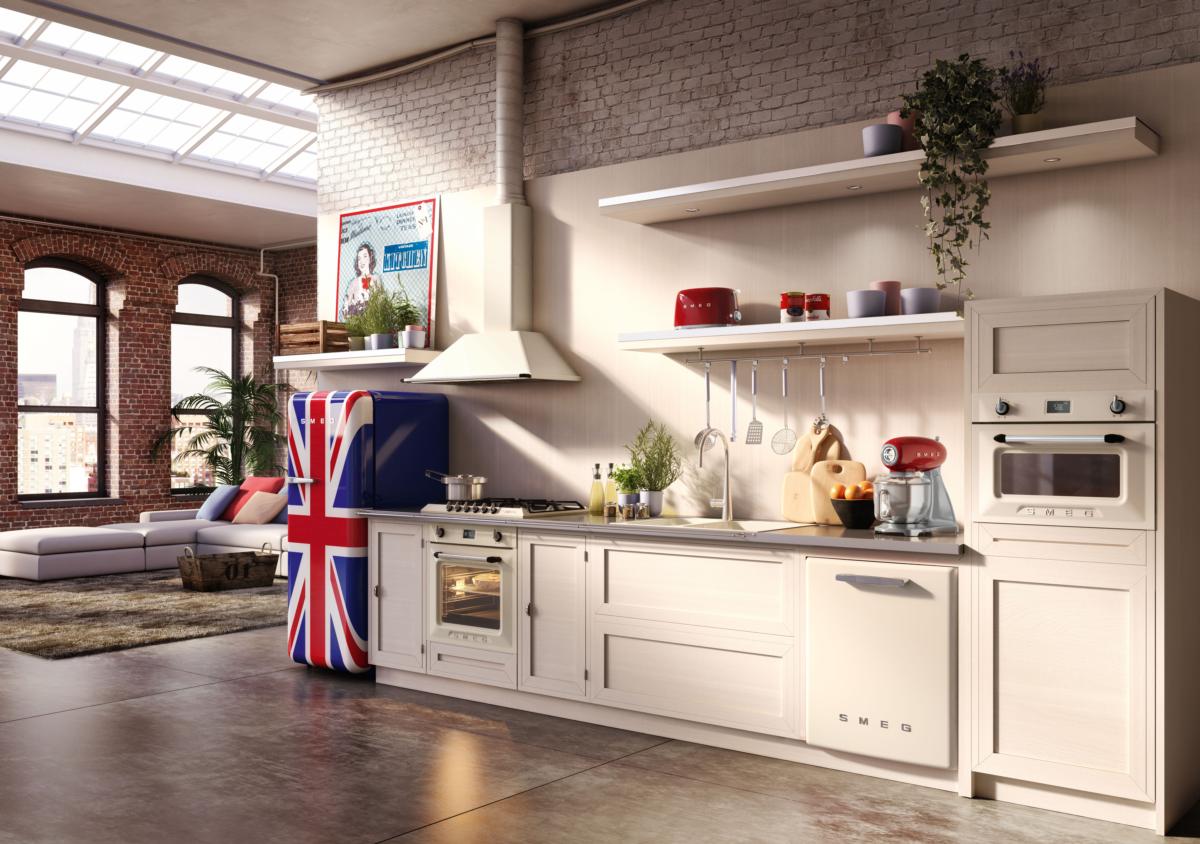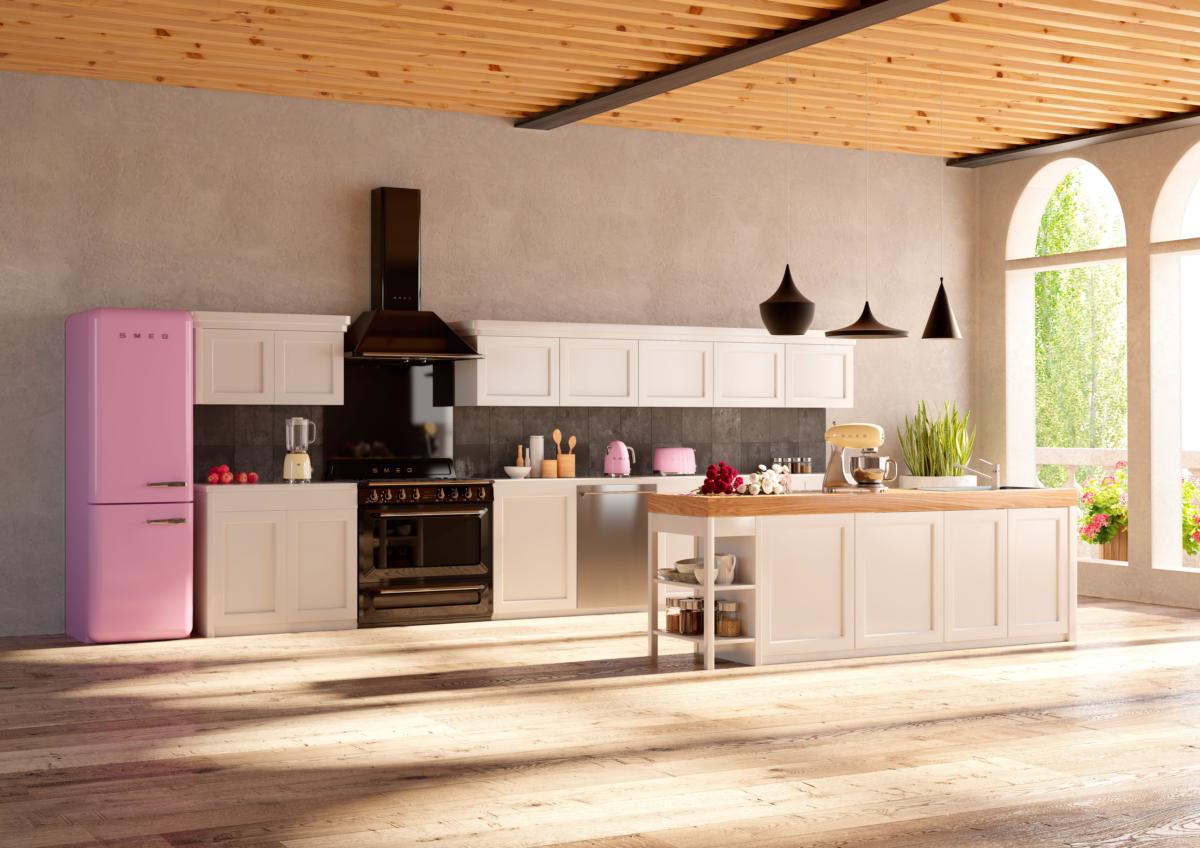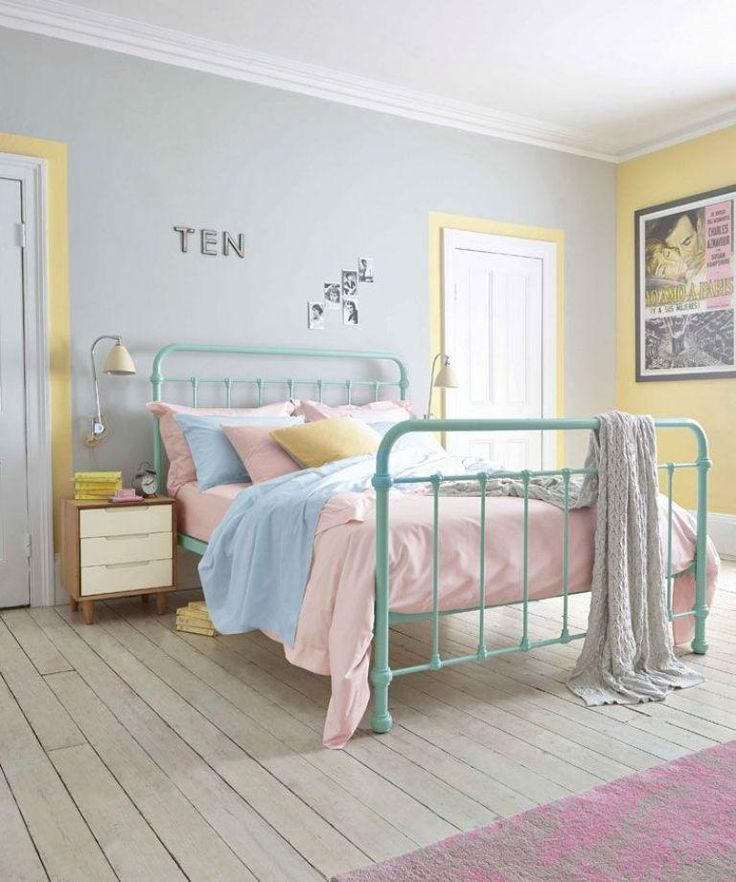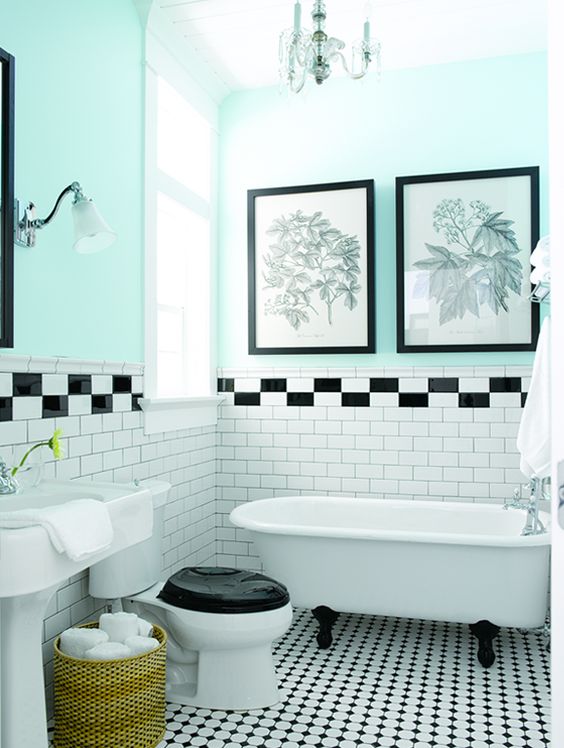In spring we all want something like thisinterior! The bright and provocative style of the 50s is what you need to start a new life. We will tell you how to create it in every room Retro style has distinctive features that are impossible not to fall in love with. And it is for these features that it is so appreciated by designers who have to create an airy and light, but bold and provocative interior. Interested? Let's highlight together the main features of retro style for each room in the house. In the 50s of the 20th century, playful and frivolous furniture on legs made of lightweight materials appeared - plastic, plywood, glass and metals, a kind of challenge to the heavy and boring furniture of previous years. Its forms became soft, smooth, but complex geometry was already evident in the ornaments and patterns. The fabrics with which upholstered furniture was covered, as opposed to pretentious and chic, became simple, monochromatic and always bright. And all this against a neutral background, usually light, to make the room seem more spacious. These details are also typical of modern living rooms in retro style. Related articles



 Unconventional shades have become a calling cardretro style. Bright, acidic, too light or, on the contrary, unexpectedly dark - there are no rules here. The main task is to shock the one who enters the room. Chrome shiny details and glossy surfaces are used for the same purpose. Another important point is the mobility of each item, including in the kitchen, because there were no built-in and multifunctional appliances at that time. It is precisely this kind of free-standing appliances that the Italian brand Smeg offers along with built-in devices in its collections " and . It all started with the famous FAB refrigerators, which are produced in more than 20 colors and with different dimensions. They turned out to be so popular that they decided to supplement the "50s Style" series with freezers, hoods, washing machines and dishwashers. And in 2015, Smeg also included small household appliances in the series. Unusual colors and nostalgic shapes of each item will help add a touch of retro to any interior, even one that is not made in . Don't be afraid to mix it up! After all, eclecticism is another sign of a typical mid-20th century interior. Alena Timofeeva, designer and architect: - The mid-20th century is a period of experiments, combining unpredictable objects and textures. And now the style of that time is characterized by streamlined shapes, an abundance of varnish and gloss, chrome and a combination of different textures. In addition, back then, people simply did not have the means to create an interior where all the items would be perfectly matched to each other, so the basis was old furniture, complemented by new things. So it is now - we can dilute the interior with modern furniture with a retro style in the form of old repainted stools and tables that we got from our grandmothers.
Unconventional shades have become a calling cardretro style. Bright, acidic, too light or, on the contrary, unexpectedly dark - there are no rules here. The main task is to shock the one who enters the room. Chrome shiny details and glossy surfaces are used for the same purpose. Another important point is the mobility of each item, including in the kitchen, because there were no built-in and multifunctional appliances at that time. It is precisely this kind of free-standing appliances that the Italian brand Smeg offers along with built-in devices in its collections " and . It all started with the famous FAB refrigerators, which are produced in more than 20 colors and with different dimensions. They turned out to be so popular that they decided to supplement the "50s Style" series with freezers, hoods, washing machines and dishwashers. And in 2015, Smeg also included small household appliances in the series. Unusual colors and nostalgic shapes of each item will help add a touch of retro to any interior, even one that is not made in . Don't be afraid to mix it up! After all, eclecticism is another sign of a typical mid-20th century interior. Alena Timofeeva, designer and architect: - The mid-20th century is a period of experiments, combining unpredictable objects and textures. And now the style of that time is characterized by streamlined shapes, an abundance of varnish and gloss, chrome and a combination of different textures. In addition, back then, people simply did not have the means to create an interior where all the items would be perfectly matched to each other, so the basis was old furniture, complemented by new things. So it is now - we can dilute the interior with modern furniture with a retro style in the form of old repainted stools and tables that we got from our grandmothers. Smeg
Smeg Smeg
Smeg Smeg
Smeg Smeg
Smeg Smeg A combination of the incompatible, a multitude of the mostdifferent shades together - this is what you can find in almost every retro interior. Are you afraid that it will turn out too bright? Take only one bright color as a basis, for example, mint, which was popular in the 50s, and complement it with many other retro details - a characteristic headboard and furniture on long legs. But those who should definitely pay attention to the retro style are lovers of decor and painting. After all, it was in the middle of the last century that pop art was born, thanks to Andy Warhol. Colorful posters, huge bright paintings in simple frames and in unlimited quantities - it is also convenient because all this can be removed at any time. And of course, do not forget about textiles - complex patterns, zigzags, herringbone and just bright shades are easiest to use in it. After all, there is less chance of making a mistake or going too far, although this is difficult to do in retro style.
Smeg A combination of the incompatible, a multitude of the mostdifferent shades together - this is what you can find in almost every retro interior. Are you afraid that it will turn out too bright? Take only one bright color as a basis, for example, mint, which was popular in the 50s, and complement it with many other retro details - a characteristic headboard and furniture on long legs. But those who should definitely pay attention to the retro style are lovers of decor and painting. After all, it was in the middle of the last century that pop art was born, thanks to Andy Warhol. Colorful posters, huge bright paintings in simple frames and in unlimited quantities - it is also convenient because all this can be removed at any time. And of course, do not forget about textiles - complex patterns, zigzags, herringbone and just bright shades are easiest to use in it. After all, there is less chance of making a mistake or going too far, although this is difficult to do in retro style.



 When it comes to the bathroom, the same thing worksthe same rule as in the kitchen — all items should be free-standing. That is, installations and wall-hung toilets do not work here. Lightness is achieved thanks to metal parts and thin long legs, for example, in a tall cabinet. And of course, you can’t do without bright colors. And this does not necessarily have to be the trim or furniture. Try to find plumbing in an unusual color, for example, a green sink or a pink toilet. As for the trim, one of the most common techniques in the 50s is a checkerboard pattern. Black and white checkered patterns not only in the bathroom, but also in other rooms, on the walls, on the floor, or just as part of the decor. And don’t forget about original, cosmic-like shapes. For example, find a mirror in a light frame with rounded corners. Or buy glossy spherical lampshades. And if it seems to you that the items do not match each other, just relax: in retro style, everything is possible! Related articles
When it comes to the bathroom, the same thing worksthe same rule as in the kitchen — all items should be free-standing. That is, installations and wall-hung toilets do not work here. Lightness is achieved thanks to metal parts and thin long legs, for example, in a tall cabinet. And of course, you can’t do without bright colors. And this does not necessarily have to be the trim or furniture. Try to find plumbing in an unusual color, for example, a green sink or a pink toilet. As for the trim, one of the most common techniques in the 50s is a checkerboard pattern. Black and white checkered patterns not only in the bathroom, but also in other rooms, on the walls, on the floor, or just as part of the decor. And don’t forget about original, cosmic-like shapes. For example, find a mirror in a light frame with rounded corners. Or buy glossy spherical lampshades. And if it seems to you that the items do not match each other, just relax: in retro style, everything is possible! Related articles




Retro photo: 20 classy interiors in the style of the 50's



